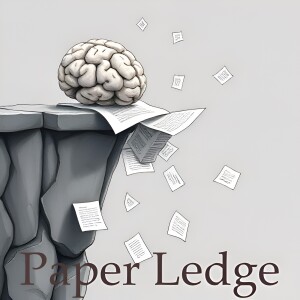
- Podcast Features
-
Monetization
-
Ads Marketplace
Join Ads Marketplace to earn through podcast sponsorships.
-
PodAds
Manage your ads with dynamic ad insertion capability.
-
Apple Podcasts Subscriptions Integration
Monetize with Apple Podcasts Subscriptions via Podbean.
-
Live Streaming
Earn rewards and recurring income from Fan Club membership.
-
Ads Marketplace
- Podbean App
-
Help and Support
-
Help Center
Get the answers and support you need.
-
Podbean Academy
Resources and guides to launch, grow, and monetize podcast.
-
Podbean Blog
Stay updated with the latest podcasting tips and trends.
-
What’s New
Check out our newest and recently released features!
-
Podcasting Smarter
Podcast interviews, best practices, and helpful tips.
-
Help Center
-
Popular Topics
-
How to Start a Podcast
The step-by-step guide to start your own podcast.
-
How to Start a Live Podcast
Create the best live podcast and engage your audience.
-
How to Monetize a Podcast
Tips on making the decision to monetize your podcast.
-
How to Promote Your Podcast
The best ways to get more eyes and ears on your podcast.
-
Podcast Advertising 101
Everything you need to know about podcast advertising.
-
Mobile Podcast Recording Guide
The ultimate guide to recording a podcast on your phone.
-
How to Use Group Recording
Steps to set up and use group recording in the Podbean app.
-
How to Start a Podcast
-
Podcasting
- Podcast Features
-
Monetization
-
Ads Marketplace
Join Ads Marketplace to earn through podcast sponsorships.
-
PodAds
Manage your ads with dynamic ad insertion capability.
-
Apple Podcasts Subscriptions Integration
Monetize with Apple Podcasts Subscriptions via Podbean.
-
Live Streaming
Earn rewards and recurring income from Fan Club membership.
-
Ads Marketplace
- Podbean App
- Advertisers
- Enterprise
- Pricing
-
Resources
-
Help and Support
-
Help Center
Get the answers and support you need.
-
Podbean Academy
Resources and guides to launch, grow, and monetize podcast.
-
Podbean Blog
Stay updated with the latest podcasting tips and trends.
-
What’s New
Check out our newest and recently released features!
-
Podcasting Smarter
Podcast interviews, best practices, and helpful tips.
-
Help Center
-
Popular Topics
-
How to Start a Podcast
The step-by-step guide to start your own podcast.
-
How to Start a Live Podcast
Create the best live podcast and engage your audience.
-
How to Monetize a Podcast
Tips on making the decision to monetize your podcast.
-
How to Promote Your Podcast
The best ways to get more eyes and ears on your podcast.
-
Podcast Advertising 101
Everything you need to know about podcast advertising.
-
Mobile Podcast Recording Guide
The ultimate guide to recording a podcast on your phone.
-
How to Use Group Recording
Steps to set up and use group recording in the Podbean app.
-
How to Start a Podcast
-
Help and Support
- Discover

Hey PaperLedge crew, Ernis here! Get ready to dive into some seriously cool tech that's helping computers "see" the world around them in 3D, kinda like how we do, but with lasers! Today, we're talking about a new approach to something called scene completion using something even cooler: diffusion models. Intrigued? You should be!
So, imagine you're driving down the street. Your eyes instantly fill in the gaps – a parked car partially blocking a store, a tree branch obscuring a sign. You effortlessly understand the complete scene. Now, imagine teaching a computer to do that, but instead of using cameras, it's using LiDAR, which is like radar but with lasers. LiDAR creates a 3D map of the environment by bouncing lasers off objects. This map is made of a bunch of points (like a super detailed connect-the-dots picture), but sometimes parts of the scene are missing or incomplete.
That's where scene completion comes in. The goal is to have the computer fill in those missing pieces, giving it a complete understanding of its surroundings. This is crucial for self-driving cars, robots navigating warehouses, and all sorts of awesome AI applications.
Now, the challenge is, how do you train a computer to do this accurately, especially when dealing with massive, complex outdoor scenes? That's where diffusion models enter the picture. Think of it like this: you start with a blurry, noisy image (like TV static) and gradually "diffuse" away the noise until you end up with a clear, complete picture. Diffusion models do something similar with the LiDAR point clouds.
Researchers have been using diffusion models to complete scenes, but there are two main approaches. Some focus on small, local areas, which can be a bit like focusing on individual puzzle pieces instead of the whole puzzle. Others work with entire objects, like cars or buildings, using more straightforward diffusion models. This research, though, asks a really interesting question: Can we use a more basic, "vanilla" diffusion model (think the original recipe) on the entire scene, without needing to focus on those tiny, local details?
Turns out, the answer is yes! The researchers behind this paper, which they've cleverly named LiDPM (LiDAR Diffusion Probabilistic Model), found that by carefully choosing a good "starting point" for the diffusion process, they could achieve better results than those other more complicated methods. It's like knowing where a few key pieces go in that puzzle, which makes solving the rest of it much easier.
Here's the key takeaway: They challenged some assumptions about how complex these models needed to be and showed that sometimes, the simplest approach, done right, can be the most effective. They tested their LiDPM on a dataset called SemanticKITTI, which is a massive collection of LiDAR scans from real-world driving scenarios, and it outperformed other scene completion methods.
"We identify approximations in the local diffusion formulation, show that they are not required to operate at the scene level, and that a vanilla DDPM with a well-chosen starting point is enough for completion."So, why does this matter?
- For AI researchers: This simplifies the process of scene completion, potentially leading to faster and more efficient algorithms.
- For autonomous vehicle developers: More accurate scene completion means safer and more reliable self-driving cars.
- For anyone interested in robotics: This work can help robots better understand and navigate their environment, opening up new possibilities for automation.
This research is a great reminder that innovation often comes from questioning assumptions and finding simpler, more elegant solutions.
Now, a couple of things that really got me thinking while reading this paper:
- Could this approach be applied to other types of 3D data, like those generated by depth cameras or structured light scanners?
- What are the ethical implications of increasingly accurate scene completion? Could this technology be used for surveillance or other potentially harmful purposes?
Food for thought, PaperLedge crew! You can find the project page at https://astra-vision.github.io/LiDPM. Go check it out and let me know what you think. Until next time, keep learning and keep questioning!
Credit to Paper authors: Tetiana Martyniuk, Gilles Puy, Alexandre Boulch, Renaud Marlet, Raoul de Charette
More Episodes
Create your
podcast in
minutes
- Full-featured podcast site
- Unlimited storage and bandwidth
- Comprehensive podcast stats
- Distribute to Apple Podcasts, Spotify, and more
- Make money with your podcast
It is Free
- Privacy Policy
- Cookie Policy
- Terms of Use
- Consent Preferences
- Copyright © 2015-2025 Podbean.com





